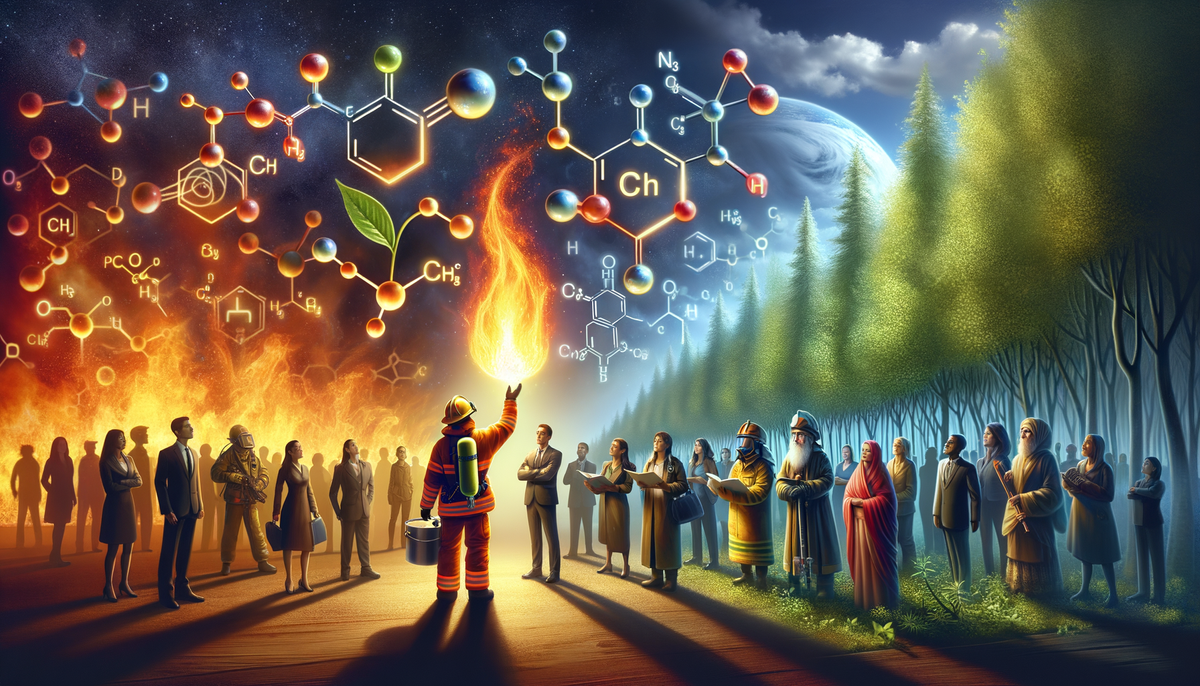Understanding Fire: Chemistry, Impact, and Safety in Modern Society
Explore the chemistry of fire and its implications in modern society, focusing on prevention and management techniques to ensure safety and ecological balance.

Understanding Fire: Chemistry, Impact, and Safety in Modern Society
Fire, as a concept and a physical phenomenon, has long captured the human imagination and played a critical role in the advancement of civilization. This week's trending topic focuses on the intricate dynamics of fire, elevating our understanding of its chemistry, impact, and the indispensable safety measures associated with it.
The Chemistry of Fire
The essence of fire lies in its chemistry. Fire is fundamentally a rapid, exothermic chemical process known as combustion. It involves a fuel reacting with oxygen to release heat, light, and byproducts like carbon dioxide and water vapor. The visible flame symbolizes this process, with its color and intensity varying with the type of fuel and environmental conditions. For deeper insights, see resources like the BBC and Variety.
Central to understanding fire behavior is the fire triangle, which consists of three elements: heat, fuel, and oxygen. Each is essential for ignition and perpetuation, and the absence of any one results in extinguishment. This fundamental principle guides both fire prevention and extinguishing techniques.
Impacts of Fire
Fire's impacts are both diverse and profound. Positively, it maintains ecological balance, stimulates new plant growth, and helps clear land for agriculture. The historical significance of fire cannot be overstated, with its role in cooking, metalworking, and even warfare underscoring its utility in human progress.
Conversely, fire can be massively destructive, leading to loss of life and property, environmental pollution, and soil degradation. Understanding these effects is crucial for professionals involved in fire management and environmental conservation. More on these topics can be found in recent articles from The New York Times and other outlets.
Fire Safety and Suppression
Professional fire management involves both preventative strategies and active suppression techniques. Understanding the fire triangle helps us develop methods to interrupt the combustion process, including cooling the heat, smothering the flames, or removing fuel sources.
Fires present significant hazards, particularly due to thick smoke that can obscure vision and complicate escape efforts during emergencies. Rapid fire spread is another risk that professionals must mitigate through advanced fire suppression technologies and strategies. Detailed guidelines and case studies are provided in sources like BBC.
Conclusion and Practical Takeaways
Engaging with fire science requires a knowledge blend of chemistry, environmental science, and safety engineering. Professionals must consider the positive roles fire plays in ecological and industrial contexts while being vigilant about its potential for devastation.
As a leader in AI consulting, we at Company X leverage our expertise to integrate AI with fire management systems, offering solutions that enhance predictive modeling and improve decision-making processes in fire prevention and response.
We encourage fire professionals and business leaders to explore how innovative technologies can support fire safety efforts. Contact us today to learn more about our cutting-edge solutions that can be tailored to meet your needs and improve your fire management strategies.
Explore the challenges and advancements in the fire industry and transform your strategies with our expert consultation.
Call-to-Action: Visit our website or contact us directly to see how we can bolster your fire safety initiatives and ensure your operations run smoothly and safely.




